At some point, as an engineer or any other worker in the construction site, you will need a laser level to complete tasks that require leveling. Laser levels apply in a variety of projects such as when surveying, fitting, demolishing, tilling, flooring, glazing, grading, and a lot more.
However, while owning a laser level may seem like a walk in the park, it takes some basic understanding of essential tips to land your most preferred. In-depth knowledge about the available models, as well as their design, is the starting point for investing in the perfect laser that guarantees value for money.
Read through this piece for well-researched information about various models of construction laser levels, how they work, their uses, design, effectiveness, and you can get the best laser level from Gearfork.
Contents
When and where to use construction laser levels
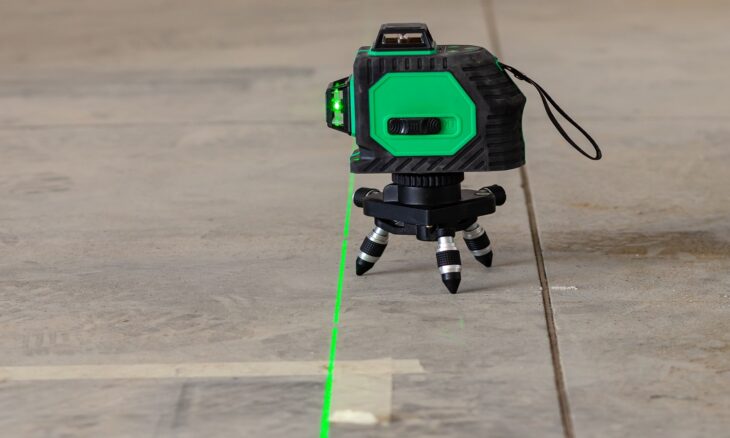
img source: architecturelab.net
A laser level applies in both interior and exterior construction tasks that require you to establish either vertical or horizontal points of reference. For example, when hanging a rectangular mirror on a wall, you will need to line it with the room’s height marks. A laser level produces a straight beam across the wall that can help you mark exact points where to place your mounting screws.
The same case, when laying tiles, you will need to draw a chalk-like line on the floor. You can then align the rectangular tiles against the drawn line to piece them together straightly. By setting the laser level against the floor, it will project a straight beam across the floor that you can use as a point of reference. With this, it is much faster and easier to measure and demarcate your working area.
Construction laser levels vary in the scope of work depending on the design. Some can be used for simple tasks while some apply in complex tasks. These tasks fall under two categories, namely;
1. Indoor
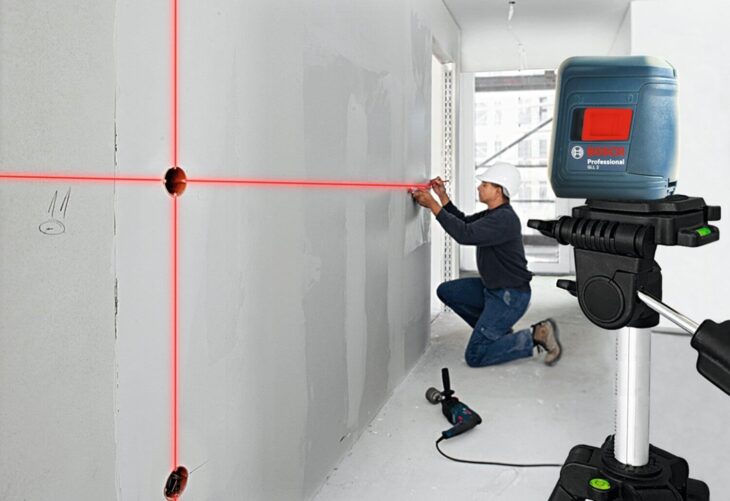
img source: laserleveladvisor.com
These are mainly interior décor that you can do for yourself. These tasks include:
- Leveling the floor
- Leveling the ceiling against the attic
- Aligning shelves, cabinets and trims
- Aligning the chair rails in the dining room
- Aligning the tiles or carpets on the floor
- Installing a drop ceiling
2. Outdoor
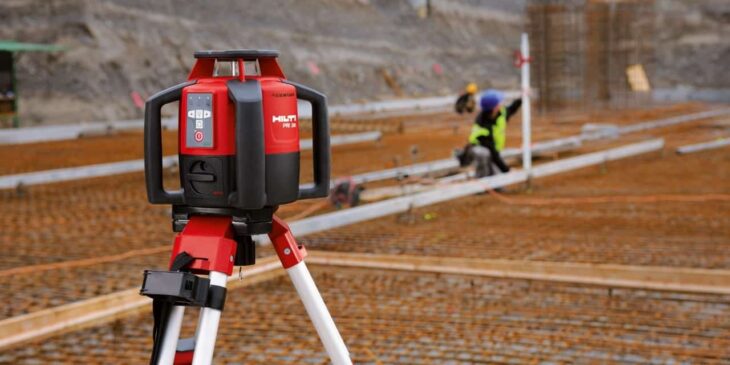
img source: laserlevelguru.com
The outdoor tasks range from simple constructions to bulky earthwork. Some are simple DIY jobs, while some, complex works that require the use of excavators. They include:
- Basic surveying tasks
- Masonry alignments
- Land elevation checks
- Grading for proper drainage and irrigation
- Aligning fences, posts and decks
- Site layouts
Types of construction laser levels
Construction laser levels are not application-specific. For some tasks, you will need the Plumb (DOT LASERS). For other projects, you will need LINE LEVELS (Line Generators) or ROTARIES. The PLUMB or LINE GENERATORS are handy for distances that range between 1″ to 150″. ROTARIES are efficient for distances ranging from 200″. With this knowledge, let us dive in each category so that you can understand how they look and their specifications.
- Point generators

img source: wonderfulengineering.com
The point generator is the simplest and easiest-to-use. Generally, it is a modified form of spirit level that has an additional point generator. The generator emits a laser beam through a sharp dot. However, where the beam is not efficient enough, you can install a “beam converter” on the device to compress the streak of light into a thin line.
- Dot lasers
Dot lasers, also called plumb lasers, produce and project 2, 3, or 5 perpendicular beams that form points on the surface where you want to establish your references. Depending on the specifications, the points can be square, plumbs or levels.
These lasers are second-most popular. Their prices range between $20 to $500 depending on the size and scope of use. Dot lasers apply both for indoor and outdoor tasks. However, the cheapest works efficiently only in the indoor environment.
- Line Lasers
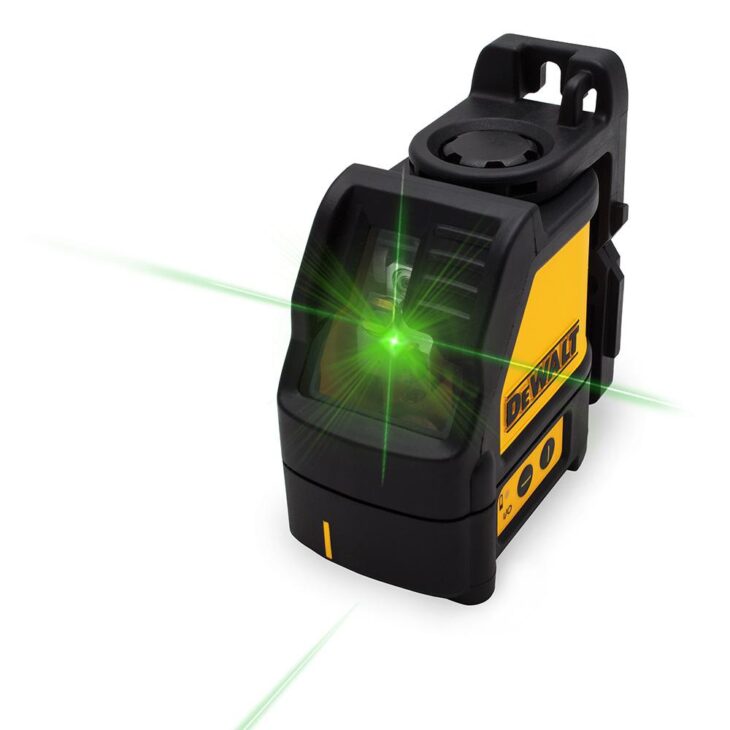
img source: homedepot-static.com
Line lasers use multiple LEDs to form laser lines in either the vertical or horizontal axis. They are most suitable for distances ranging between 65 to 100 feet. Most line lasers work well in the indoor environment. Nevertheless, sophisticated models come with light detectors for outdoor tasks. Also, some models come with both plumb up and plumb down capabilities that you can use to create up to three levels at once.
The scope of functionality of a line laser depends on its fan-angle, defined as an angular spread used to determine the size and range of any projection. Small liners feature fan angles of between +-60 to180 degrees. Larger models have fan angles of more than 180 degrees.
When buying line lasers, ask for their specific fan angles since this is what determines the number of walls you can level at once. A 180-degree fan angle will capture only two walls. a 90 degrees fan angle will capture one wall. Whereas the all-rounder 360 degrees fan angle will capture 4 walls.
The cheapest line laser costs $40, while the most expensive goes for $600. With around $100, you can land an all-rounder line laser that works both indoor and outdoor.
- Rotary level lasers
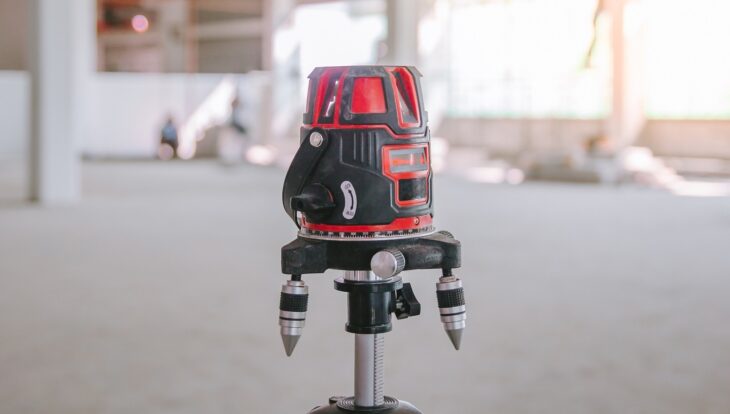
img source: architecturelab.net
Rotary lasers project a single beam from a fast-rotating dot. Most conventional rotaries consist of both point generators, plumb-up, and plumb-down capabilities. They also come with line sensors that detect the levels automatically and stabilize them.
Rotaries come in handy where high-end accuracy is a priority. The smallest can fit into the pocket, medium-sized fit into the back pocket, while the largest can only fit on a tractor. In construction sites that require days of leveling, you will find big rotaries mounted on platforms such as the base of a building or slab.
Some other components that you may find in rotaries include sensors for detecting levels and remote control accessories. Depending on the price and related accessories, rotaries have price tags that range between $250 to over $200. The most expensive models are mainly for outdoor construction tasks such as excavation, grading, laying the foundation, laying pipes. They come as manual or self-leveling.
Other types of lasers
- Grade lasers
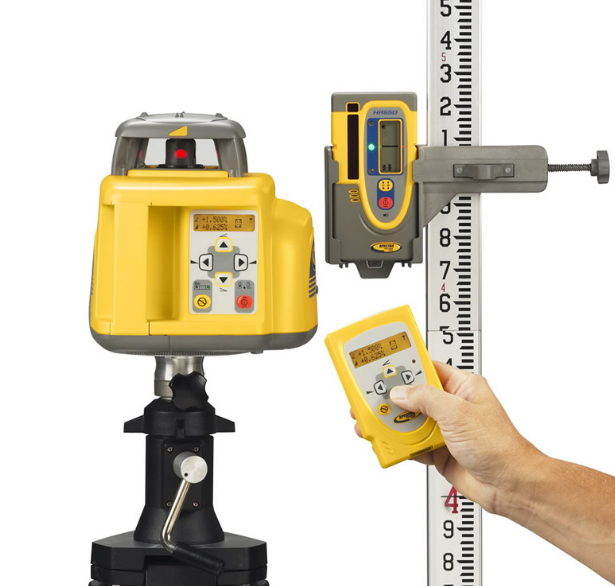
img source: cfawalls.org
Grade lasers are complex rotary lasers designed for surface grading. They come as single or dual grade lasers for either single or multiple tasks.
